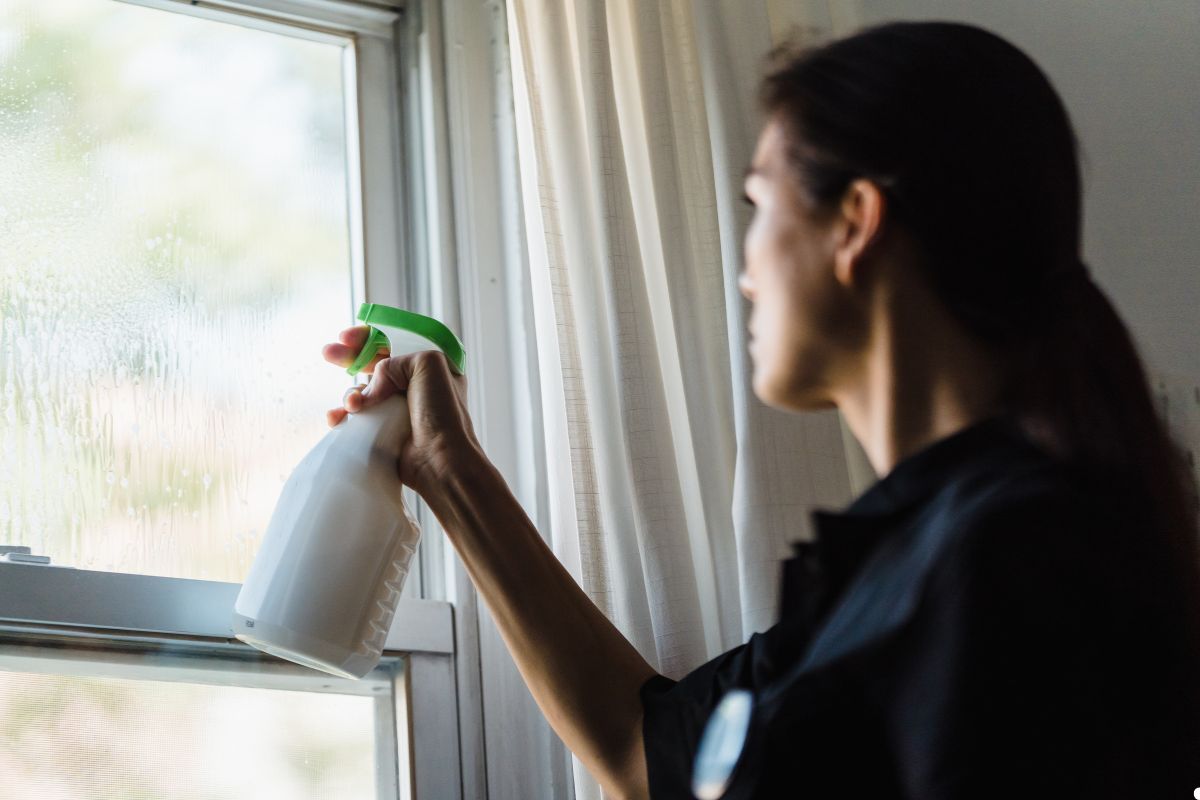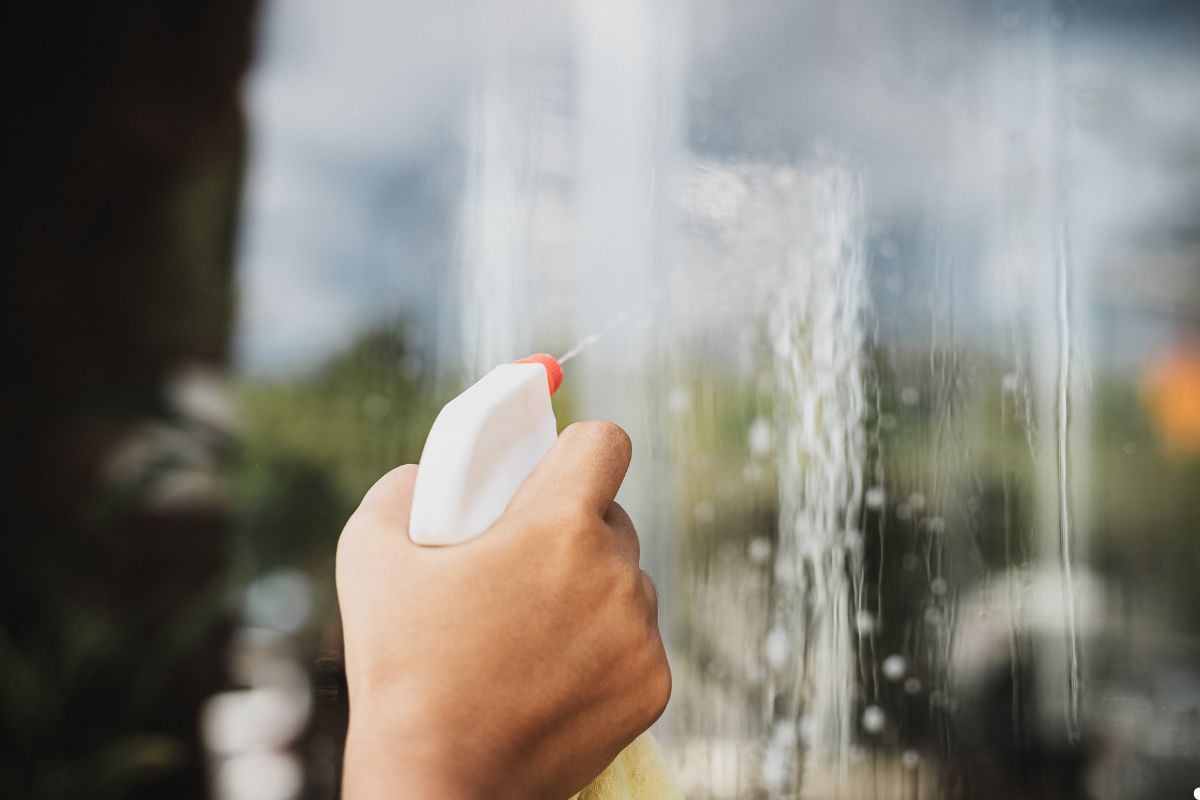
The short answer is: it depends. While Sprayway may be used cautiously on some types of tinted windows, it’s often not the ideal choice and can potentially cause damage over time. The risk lies in its ingredients and the delicate nature of window tint itself. This article will break down the reasons why, explore safer alternatives, and provide essential tips for keeping your tinted windows looking their best. If you have any questions or need professional advice, feel free to call us — we’re here to help!
What is Window Tint and How Does it Work?
Window tint isn’t just a dark film; it’s a sophisticated application designed to block UV rays, reduce glare, and enhance the look of your vehicle. Understanding how it works is key to understanding how certain cleaners can harm it.
There are several types of window tint, each with different properties:
- Dyed Film: The most basic and affordable, it simply dyes the film to reduce light transmission. It offers minimal heat rejection.
- Metallic Film: Contains tiny metallic particles that reflect heat and light. It’s more effective than dyed film but can sometimes interfere with electronic signals. After installing heat-reflective films with tiny metallic particles, scheduling an exterior window washing service ensures they stay clean and effective.
- Carbon Film: Uses carbon particles to block heat and UV rays. It’s more durable than dyed film and doesn’t interfere with electronics.
- Ceramic Film: The highest quality option, using ceramic particles to block a significant amount of heat, UV, and glare. It’s the most expensive but offers the best performance and longevity.
These films are applied to the interior of your windows, typically with an adhesive layer. The sun’s radiation, if not blocked can cause fading of interior.

The Delicate Nature of Window Tint
Regardless of the type, window tint is surprisingly delicate. While it’s designed to withstand normal wear and tear, it’s vulnerable to harsh chemicals, abrasive cleaners, and improper cleaning techniques. The potential consequences of using the wrong cleaner include:
- Discoloration: The tint can fade or change color.
- Bubbling: Air pockets can form between the tint and the glass.
- Peeling: The tint can start to peel away from the edges or in large sections.
- Scratching: Abrasive cleaners or cloths can scratch the surface of the tint.
Sprayway Glass Cleaner: An In-Depth Look
Sprayway is a widely used glass cleaner known for its effective cleaning power and streak-free finish. But what exactly is in it?
Let’s decoding the ingredients list:
Typical ingredients in Sprayway Glass Cleaner include:
- Water: The primary solvent.
- Isopropyl Alcohol: Helps dissolve dirt and grease.
- Cleaning Solvents (often proprietary): Provide cleaning power.
- Propellants: To create the aerosol spray.
- Fragrance: For a pleasant scent.
Does Sprayway Contain Ammonia?
One of the biggest concerns with glass cleaners and tinted windows is the presence of ammonia. Ammonia is a harsh chemical that can damage the adhesive and film of window tint.
The good news is that Sprayway is generally marketed as ammonia-free. However, it’s always crucial to check the product label to confirm the specific formulation you are using. Formulations can change, and it’s best to be absolutely sure.
The Risk Factors: Why Sprayway Might Not Be Ideal
Even if Sprayway is ammonia-free, other ingredients can still pose a risk. The potential damage and degradation can arise from:
- Harsh Solvents: Even without ammonia, strong solvents can weaken the adhesive bond of the tint.
- Alcohol Content: High concentrations of alcohol can dry out and crack the tint over time.
- Propellants: Some propellants can leave a residue that attracts dirt and grime, requiring more frequent cleaning and increasing the risk of damage.
The Long-Term Effects of Regular Use
The occasional use of Sprayway might not cause immediate, noticeable damage. However, the long-term effects of regular use can be significant. Over time, the repeated exposure to potentially harmful ingredients can lead to:
- Premature Fading: The tint loses its original color and becomes lighter.
- Increased Brittleness: The tint becomes more prone to cracking and peeling.
- Reduced Heat Rejection: The tint loses its ability to effectively block heat and UV rays.
Safer Alternatives for Cleaning Tinted Windows
Fortunately, there are plenty of recommended cleaning solutions specifically designed for tinted windows. These options are gentle, effective, and won’t damage your tint:
- DIY Cleaning Solutions: A mixture of distilled water and a small amount of mild dish soap (like Dawn) is a safe and effective option. You can also use a solution of distilled water and white vinegar (1 cup vinegar to 1 gallon of water).
- Commercial Tint-Safe Cleaners: Many automotive detailing companies offer cleaners specifically formulated for tinted windows. Look for products labeled as “ammonia-free” and “tint-safe.”
Best Practices for Cleaning Tinted Windows
Using the right cleaner is only half the battle. Best practices for cleaning tinted windows include:
- Use a Microfiber Cloth: Microfiber cloths are soft and non-abrasive, preventing scratches.
- Gentle Cleaning Techniques: Avoid scrubbing or using excessive pressure. Gently wipe the window in a back-and-forth motion. Proper washing techniques involve smooth, light motions without pressing too hard.
- Avoid Direct Sunlight: Cleaning in direct sunlight can cause the cleaner to dry too quickly, leaving streaks.

Frequently Asked Questions (FAQs)
Here are some common questions about cleaning tinted windows:
Can I use Windex on tinted windows?
Avoid using Windex on tinted windows unless you can absolutely confirm that the specific Windex formula is ammonia-free. Many Windex products contain ammonia, which can damage tint. Protect your tinted windows with the right care! Contact us today to learn more about safe cleaning solutions.
How often should I clean my tinted windows?
Clean your tinted windows as needed, typically every few weeks or when they become visibly dirty. Avoid over-cleaning, as this can also contribute to wear and tear.
What type of cloth is best for cleaning tint?
Microfiber cloths are the best choice for cleaning tinted windows. They are soft, absorbent, and won’t scratch the tint.
How to remove streaks from tinted windows?
If you have streaks, try diluting your cleaning solution further or using a clean, dry microfiber cloth to buff the windows after cleaning. Make sure your windows aren’t hot when cleaning to prevent streaking.
Protecting Your Investment: Choosing the Right Cleaner
Your tinted windows are an investment that enhances the look and comfort of your vehicle. Choosing the right cleaner is crucial for protecting that investment. While Sprayway might be a convenient option, its ingredients can pose a risk to your tint over time. By opting for tint-safe cleaners and following proper cleaning techniques, you can keep your tinted windows looking their best for years to come. If you have any questions or need recommendations, feel free to call us — we’re here to help!
